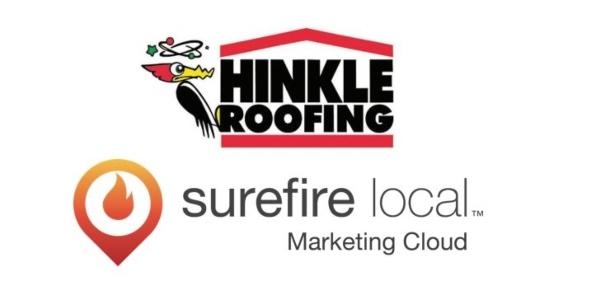Expert Estimating Part III - Determining Gross Profit and Your Strategy for Selling

By John Kenney, Cotney Consulting Group.
Roofing profits start with a solid estimate.
In Part I, of this Expert Estimating series reviewed how the estimating process begins, the benefits of well-trained estimators and the importance of having strong processes and procedures.
In Part II, we covered how to determine your costs and how to properly markup those costs as well as the importance of a strong review process.
In this last section, you will learn how to properly apply gross profit margins to your estimates and the importance of supporting your estimates with a strong sales strategy.
Stage 5 – Calculating Gross Profit
Understanding that Gross Profit or Gross Margin is not a markup is key to properly calculating it on your estimates. The gross profit margin is present on the income statement every company prepares as a part of its accounting process. Gross margin is the amount left over a business subtracts the cost of goods sold from the net sales revenue for products or services sold. As such, the gross margin of your estimates to determine your selling has to be greater than your companies operating expenses, or you will achieve the goal of a successful business; Profit.
Profit margin gaols are set by a companies management or ownership, then provided to estimator or estimating team as either a range or minimum percentage to achieve. You may receive this as either gross profit or nets profit targets depending on your companies strategy, and you will need to know ways of achieving these goals during the estimating process.
Expressing the Margin as a Percentage
It is useful to express the gross or net margin as a percentage. For instance, if you want to compare the margins of two projects of different types, the margin percentage is a more applicable and useful comparison.
Key Takeaways of Gross and Net Margins in Construction
-
Gross profit refers to a company's profits earned after subtracting the costs of goods purchased, labor to install, subcontractors or equipment used, and furnishing and installing its services.
-
Net income indicates a company's profit after all of its operating expenses that have been deducted from gross profit revenues.
-
Net income is what is leftover at the bottom of the income statement and referred to as the "bottom line."
Condensed Financial Statement Example:
Formulas For Calculating Gross and Net Margins
Gross Margin Dollars
(Sell Price) minus (Estimated Cost) equals (Gross Margin Dollars)
Gross Margin Percentage
Gross Profit Percentage = (Total Revenue – Cost of Goods Sold)/Total Revenue x 100
($257,000 - $175,000) / $257,000 X 100 = 31.90 or 31.90%
Net Profit Margin and Percentage
Net Margin Dollars = (Gross Profit Dollars – Operating Expense Dollars)
Net Profit Margin Ratio = (Net Profit / Revenue)
Understanding Profit
I have always found it best when calculating the profit on estimates; you must know the companies net profit goals to assure you are selling at the proper gross profit margin to assure you are meeting the company's bottom-line goals. To further explain and expand upon this, you need to understand that burdened overhead mark on a project estimate can vary depending on the ratios of labor to materials and overhead recovery methods.
Proper overhead recovery in a construction business is a detailed and sometimes complicated subject depending on whether you use a straight line or dual overhead recovery methods. That is another subject we will cover in a further Roof Report.
If your company has set a net profit goal of 6% as a minimum that they will accept for any project you estimate, then the net profit becomes the determining factor over gross profit is setting your lowest acceptable sell price. All numbers are driven backward off the bottom-line requirement. See the below example.
Stage 5- Developing Your Sales Strategy
Developing a profitable selling strategy involves more than estimating the costs, applying markups, and calculating your profit margin. You need to interpret how your customer thinks, not only how they feel about your price in relationship to your services but also what they may think about your competitors' prices.
Your goal is to make more profit while performing fewer projects over the year. Just raising your rates is not a strategy to accomplish this, that alone will fail. The key is to change the level of service you provide. Your clients are willing to pay for value-added pricing. To sell value instead of price, you have to be prepared to make operational changes.
Operational Efficiency
Systems and procedures you need in place (Standard Operating Procedures – SOP)
-
Client prescreening/qualifying process (Estimating Filter)
-
Sales process and funnel
-
Accurate estimating and quoting process
-
A systematic and prompt proposal process
-
Project scheduling procedures
-
Contract review and execution process
-
Invoicing process system
-
Change order and document-control process
-
Fiel production/operations procedures
-
Project closeout procedures
-
Warranty program
By changing the way you do business and implementing these procedures will not be easy, but it will be a clear-cut process to get accomplished. Change is never easy, but it can be straightforward. If you make these changes in your business, it is a win-win strategy. Your customers will be pleased about their purchase when you deliver on the value that you sell, and you make more money.
Learn more about Cotney Consulting Group in their RCS Directory.
John Kenney has over 45 years' experience in the roofing industry. John started his career by working as a roofing apprentice at a family business in the Northeast to operating multiple Top 100 Roofing Contractors. As Chief Operating Officer, John is intimately familiar with all aspects of roofing production, estimating, and operations. During his tenure in the industry, John ran business units associated with delivering great workmanship and unparalleled customer service while ensuring strong net profits for his company before joining Cotney Consulting Group. If you would like any further information on this or another subject, you can contact John at jkenney@cotneyconsulting.com.




























Comments
Leave a Reply
Have an account? Login to leave a comment!
Sign In